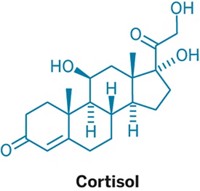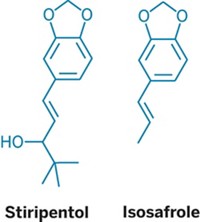Advertisement
Grab your lab coat. Let's get started
Welcome!
Welcome!
Create an account below to get 6 C&EN articles per month, receive newsletters and more - all free.
It seems this is your first time logging in online. Please enter the following information to continue.
As an ACS member you automatically get access to this site. All we need is few more details to create your reading experience.
Not you? Sign in with a different account.
Not you? Sign in with a different account.
ERROR 1
ERROR 1
ERROR 2
ERROR 2
ERROR 2
ERROR 2
ERROR 2
Password and Confirm password must match.
If you have an ACS member number, please enter it here so we can link this account to your membership. (optional)
ERROR 2
ACS values your privacy. By submitting your information, you are gaining access to C&EN and subscribing to our weekly newsletter. We use the information you provide to make your reading experience better, and we will never sell your data to third party members.
Biological Chemistry
A New Heartbeat Helper
Drug Discovery: Small molecule powers cardiac myosin to counteract heart failure
by Sarah Everts
March 21, 2011
| A version of this story appeared in
Volume 89, Issue 12
A healthy, beating heart relies on an army of tiny force-generating protein motors called myosins, and when these proteins don’t contract, heart failure often follows. Help could come from the small molecule omecamtiv mecarbil, which activates cardiac myosin to counteract heart failure due to poor contraction, according to a new study from an academic-industry team (Science, DOI: 10.1126/science.1200113).
Insights into the mode of action of omecamtiv mecarbil, which is currently in clinical trials, will likely inspire other drug discovery programs. According to the American Heart Association, heart failure results in nearly 300,000 deaths every year in the U.S. alone.
Cardiac myosin hydrolyzes adenosine triphosphate (ATP) to power the large conformational changes in the protein that generate the force required for muscle fibers to contract, explains Fady I. Malik, vice president of biology and therapeutics at South San Francisco, Calif.-based Cytokinetics, who led the research. Cardiac contractions rely on two versions of myosin; these isoforms differ in their rates of ATP hydrolysis.
In a normally functioning heart, about 10% of cardiac myosin participates in any given contraction, with both the fast and slow ATP-hydrolyzing myosin isoforms contributing to the motion. But heart disease patients often possess a lower proportion of the fast isoforms, leading to contractile dysfunction, explains Richard L. Moss, a University of Wisconsin School of Medicine & Public Health researcher who was not involved in the study.
When omecamtiv mecarbil binds to cardiac myosins, the small molecule boosts the proteins’ rate of ATP hydrolysis, thereby increasing cardiac function, Malik says. Imagine that a heart contraction is like a “tug of war,” he says, where the myosin proteins are people tugging. “This molecule allows people’s hands to get on the rope faster, resulting in more hands pulling on the rope,” Malik explains.
Moss points out that omecamtiv mecarbil seems to target an amino acid sequence that is found primarily in cardiac myosin but not in fast skeletal muscle myosin required for fine motor movements. This selectivity could reduce the possibility of side effects should the molecule become a drug, he says.





Join the conversation
Contact the reporter
Submit a Letter to the Editor for publication
Engage with us on Twitter